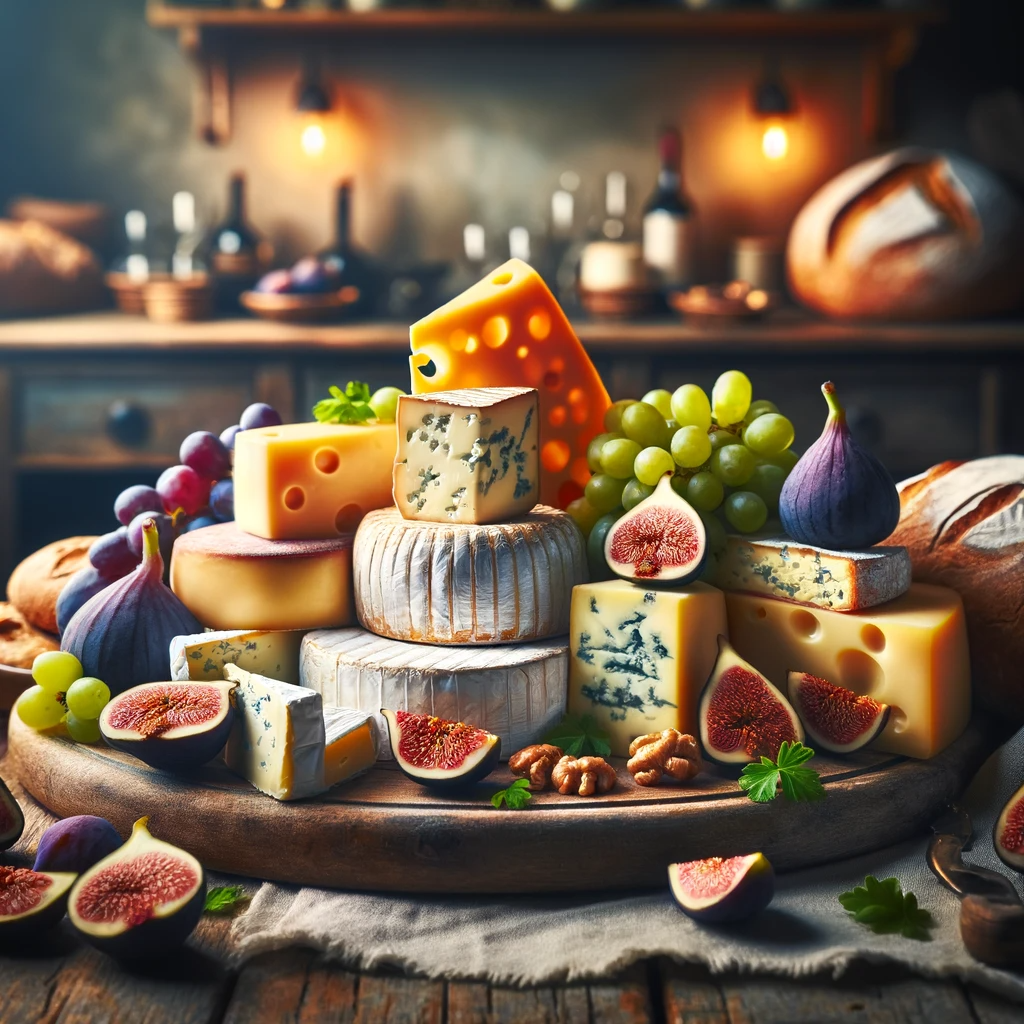Cheese is a beloved dairy product enjoyed by people of all ages across the United States. Whether it’s a classic grilled cheese sandwich, a gourmet cheese platter, or a creamy macaroni and cheese dish, cheese is a staple in American cuisine. But have you ever wondered how the ingredients for cheese are sourced and procured in the USA? In this article, we’ll take a deep dive into the fascinating world of cheese production, exploring where the key ingredients come from and how they make their way into your favorite dairy products.
Milk: The Primary Ingredient
1. Dairy Farms
The heart and soul of cheese production in the USA lies on dairy farms. These farms are spread throughout the country, with the highest concentration in states like Wisconsin, California, and New York. The majority of cheese production relies on cow’s milk, but goat and sheep milk are also used to create specialty cheeses.
2. Dairy Cow Breeds
Different dairy cow breeds are found on American farms, with Holsteins, Jerseys, and Guernseys being the most common. These cows are carefully bred and raised to maximize milk production, which is crucial for cheese production.
3. Milk Quality and Testing
To ensure the highest quality milk, strict standards and testing protocols are in place. Farmers and dairy cooperatives work together to ensure that the milk meets industry standards, with regular testing for factors such as fat content, protein levels, and overall cleanliness.
Cheese Cultures and Starters
1. Bacterial Cultures
Cheese cultures are specific strains of bacteria that play a critical role in the cheese-making process. These cultures are sourced from specialized laboratories and are essential for fermentation, flavor development, and texture control.
2. Yeast and Mold Starters
In addition to bacteria, yeast and mold starters are also used in certain cheese varieties. These starters are carefully cultivated and sourced to achieve the desired flavor and texture characteristics in cheeses like blue cheese and Brie.
Coagulants: Rennet and More
1. Rennet
Rennet is a crucial coagulant used to curdle milk during the cheese-making process. Traditional rennet is derived from the stomach lining of calves, but vegetarian and microbial rennet options are also available to meet different dietary and ethical preferences.
2. Acid Coagulants
In some cheese varieties, acid coagulants like vinegar or lemon juice are used instead of rennet. These ingredients provide an alternative coagulation method for cheeses like ricotta and paneer.
Salt and Seasonings
1. Salt
Salt is used in cheese-making primarily for flavor and preservation. It enhances the taste and helps control the growth of undesirable microorganisms. It is sourced from various suppliers, both domestically and internationally.
2. Seasonings and Additives
Different cheeses require specific seasonings and additives to achieve their distinctive flavors. These can include herbs, spices, and even truffles, depending on the cheese variety. Suppliers for these ingredients are chosen based on their quality and consistency.
Packaging and Distribution
1. Packaging Materials
Once the cheese is made, it needs to be carefully packaged to preserve its quality. Packaging materials like wax paper, plastic wrap, and vacuum-sealed bags are sourced from suppliers that meet industry standards.
2. Distribution Networks
Cheese products are distributed through extensive networks, involving wholesalers, retailers, and sometimes direct sales to consumers. These distribution channels ensure that cheese reaches consumers’ tables fresh and in optimal condition.
Regulations and Quality Control
1. FDA Regulations
The Food and Drug Administration (FDA) oversees cheese production in the USA, enforcing regulations related to food safety, labeling, and quality standards. Cheese manufacturers must comply with these regulations to ensure the safety and quality of their products.
2. Cheese Associations
Various cheese associations and organizations, such as the American Cheese Society, provide guidance, education, and support to cheese producers, promoting best practices and innovation in the industry.
In conclusion, cheese production in the USA is a complex and highly regulated process that involves sourcing and procuring a variety of ingredients from dairy farms, laboratories, and suppliers across the country and sometimes from around the world. The careful selection and handling of these ingredients, along with adherence to strict quality standards, are essential to delivering the delicious cheeses enjoyed by millions of Americans every day. Whether you’re savoring a classic cheddar or indulging in a gourmet Gouda, the journey of cheese ingredients from source to your plate is a fascinating and flavorful one.
